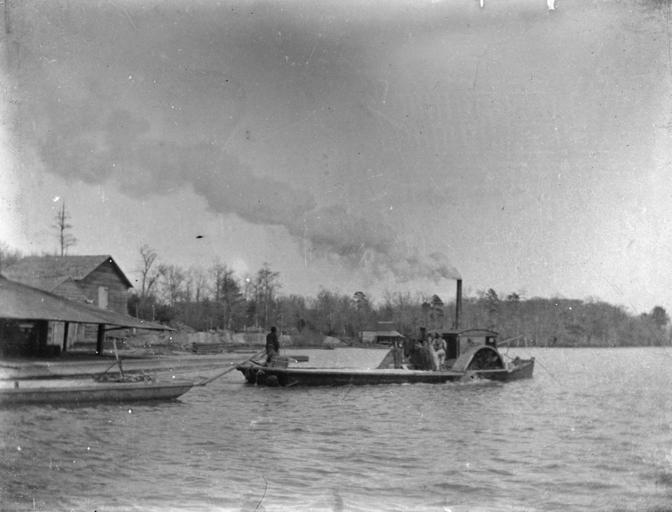MAKE A MEME
View Large Image

| View Original: | PhC_96_09_Greenfield_Fishery,_Chowan_County,_NC,_c.1905.jpg (1000x762) | |||
| Download: | Original | Medium | Small | Thumb |
| Courtesy of: | www.flickr.com | More Like This | ||
| Keywords: blackandwhite monochrome outdoor sky black and white Flatboat, Greenfield Fishery, Chowan County, NC, c.1905 (N.2000.11.92). The small boat is the rope boat, handled by a man called a roper, who in this picture is standing in the stern of the fishing flat boat, the Fish Hawk, which is the fishery’s sea-end flat. The land-end flat is the Greenfield. The two flats are steam-powered with paddle wheels on each side for propulsion. At the left is the main fishing shelter where fish are landed, washed, cleaned, salted, and packed. Herring go into herring kegs; shad, perch, and rock into boxes for shipment to S. B. Miller and Sons, Fulton Fish Market, New York City. To the east of the shelter just to the right is the ice house where ice cut in winter is stored. Further east in the far distance is the sea-end engine house where the windlass pulled the seine back to share after the two steam flats had shot the seine straight out to the center bush at the beginning of the fishing operation. The center bush is a small pine tree stuck upright into the bottom of the sound usually about one to 1 ¼ miles from shore. From the Ross and Frances Inglis Photograph Collection, PhC.96, State Archives of North Carolina, Raleigh, NC. Flatboat, Greenfield Fishery, Chowan County, NC, c.1905 (N.2000.11.92). The small boat is the rope boat, handled by a man called a roper, who in this picture is standing in the stern of the fishing flat boat, the Fish Hawk, which is the fishery’s sea-end flat. The land-end flat is the Greenfield. The two flats are steam-powered with paddle wheels on each side for propulsion. At the left is the main fishing shelter where fish are landed, washed, cleaned, salted, and packed. Herring go into herring kegs; shad, perch, and rock into boxes for shipment to S. B. Miller and Sons, Fulton Fish Market, New York City. To the east of the shelter just to the right is the ice house where ice cut in winter is stored. Further east in the far distance is the sea-end engine house where the windlass pulled the seine back to share after the two steam flats had shot the seine straight out to the center bush at the beginning of the fishing operation. The center bush is a small pine tree stuck upright into the bottom of the sound usually about one to 1 ¼ miles from shore. From the Ross and Frances Inglis Photograph Collection, PhC.96, State Archives of North Carolina, Raleigh, NC. | ||||